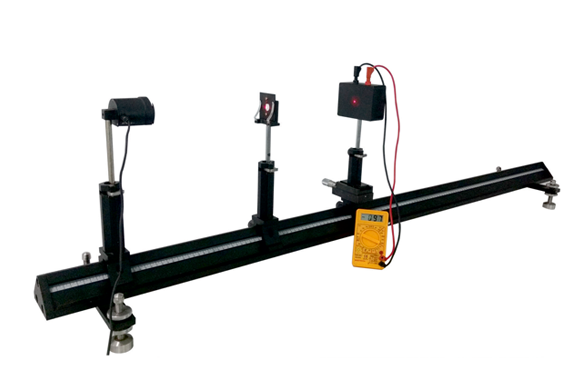
When a light beam passes through a polarizer filter, it gets linearly polarized. When this linearly polarized light passes through analyzer, its intensity depends on the angular position of the analyzer. The maximum light intensity is transmitted when the optical axis of polarizer and analyzer coincide. The intensity of transmitted beam depends on the angular position between the optical axis of the polarizer and analyzer (q) and is defined by Malus law as
I=I0 cos2θ
where I0 is the intensity of incident light.
Further the intensity of light depends on the distance between the source and the detector and is defined by the inverse square law.